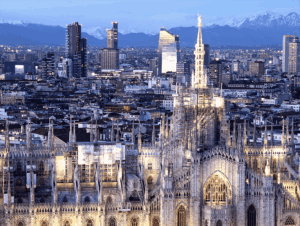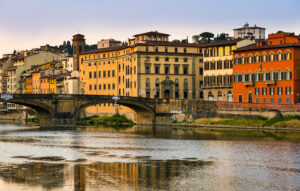If you’re in the US and dream of investing in Italy’s dynamic real estate market, whether it’s a prestigious apartment in Milan or an idyllic villa in Tuscany, Columbus International is your bridge between both worlds.
Our expert real estate agents understand both the US and Italian markets, offering unparalleled guidance and exclusive access to the finest properties. Don’t miss this unique opportunity to expand your portfolio and live “La Dolce Vita.”
Contact our Columbus International specialists today to start your investment journey!
info@columbusintl.com
The country’s unique combination of lifestyle appeal and favorable tax treatment is reshaping the global wealth migration landscape
In the high-stakes game of global wealth migration, Italy has quietly positioned itself as a formidable player. The country now ranks as the third-most popular destination worldwide for millionaires seeking new residences, with an expected influx of 3,600 ultra-high-net-worth individuals bringing $21 billion in assets during 2025 alone.
This silent exodus of capital represents a dramatic shift in global wealth patterns. According to data from Henley & Partners, Italy trails only the United Arab Emirates (9,800 arrivals) and the United States (7,500) in attracting millionaire migrants, surpassing traditional havens like Switzerland, which expects just 3,000 new arrivals.
The Italian Advantage: La Dolce Vita Meets Tax Efficiency
Italy’s appeal stems from a compelling dual proposition: unparalleled quality of life combined with sophisticated tax optimization strategies. The country offers what many wealthy individuals consider the perfect balance of cultural richness, culinary excellence, and favorable fiscal treatment.
The cornerstone of Italy’s strategy is the so-called “CR7 rule,” named after soccer superstar Cristiano Ronaldo, who famously utilized the provision. This mechanism allows non-residents to pay a flat annual tax of €200,000 on foreign-sourced income for up to 15 years—recently doubled from the previous €100,000 threshold.
For wealthy individuals generating income from diverse global sources, this fixed-rate taxation represents significant savings compared to progressive tax systems elsewhere. “When you factor in both tax costs and housing expenses, many clients have discovered that Italy is actually more cost-effective than Monaco,” notes Henley & Partners.
Milan: The New European Capital of Wealth
Lombardy, and Milan in particular, has emerged as the epicenter of this wealth migration. Approximately half of the 4,500 individuals who have benefited from the favorable tax regime have chosen Milan as their primary residence, according to Marco Cerrato, a partner at Maisto e Associati law firm.
The demographic profile of these new residents reveals an interesting pattern: they tend to be relatively young professionals, predominantly working in private equity and asset management. This influx has transformed Milan into a magnet for international capital, with the city now hosting 115,000 millionaires and 17 billionaires, ranking 11th globally among the world’s wealthiest cities.
Real Estate Market Dynamics
The impact on Milan’s luxury real estate market has been profound. While overall Italian property transactions declined 13.2% in 2023, the ultra-luxury segment—properties valued above €2 million—has experienced consistent growth. In some areas of Milan, property prices have surged up to 46% over five years.
This growth trajectory appears sustainable, with 2025 projections indicating further price increases driven by declining interest rates and sustained demand from the international wealth community.
A Global Phenomenon with Local Impact
The migration patterns reveal a geographically diverse influx. French nationals registered in Milan increased from 343 in 2017 to 577 in 2023, while British residents grew from 163 to 215, peaking at 402 during the Brexit period in 2020. The wealthy newcomers also include Swiss, Brazilian, Mexican, Belgian, German, Norwegian, and Middle Eastern investors.
Beyond Milan, wealthy individuals are establishing residences throughout Italy’s most prestigious locations. Younger arrivals from London typically gravitate toward Milan, while older investors often prefer Rome, Tuscany, or Lombardy’s lake regions. Lake Como, in particular, has become a preferred destination for international celebrities.
Balancing Growth with Social Responsibility
The phenomenon raises important questions about gentrification and inequality. Critics argue that while Italy benefits from capital inflows, the policy risks creating a two-tier system where wealthy foreigners enjoy preferential tax treatment while domestic taxpayers face higher rates.
Some policymakers have proposed that portions of the flat tax revenue be directed to local municipalities for social programs, addressing concerns about wealth concentration and community impact.
Strategic Positioning for the Future
Italy’s approach appears deliberately calibrated to avoid the pitfalls experienced by other countries. Portugal, for instance, recently eliminated its generous tax incentives after they created social tensions and attracted criticism for benefiting primarily wealthy foreigners.
Instead, Italy has chosen a more selective approach: higher entry thresholds, stricter controls, and more targeted benefits. The strategy aims not to become a tax haven but to establish Italy as a stable, elegant refuge for global wealth—a place where capital is not just welcomed but thoughtfully integrated.
The Broader Economic Impact
The government’s calculation extends beyond immediate tax revenue. The theory suggests that attracting high-net-worth individuals can generate broader economic benefits through job creation, investment opportunities, and enhanced international visibility for Italian businesses and institutions.
However, as this wealth migration continues to reshape Italy’s economic landscape, the long-term social and economic implications remain a subject of intense debate. The success of Italy’s strategy will ultimately be measured not just in tax revenues and property values, but in its ability to integrate global wealth in ways that benefit the broader Italian economy and society.
As global economic uncertainty persists, Italy’s combination of cultural appeal, lifestyle quality, and fiscal efficiency positions it uniquely in the competitive landscape of international wealth management. The question remains whether this influx of capital will translate into sustainable economic growth that benefits all Italians, or whether it will primarily serve the interests of a select few who can afford to buy their way into la dolce vita.
Source: Il Giorno



